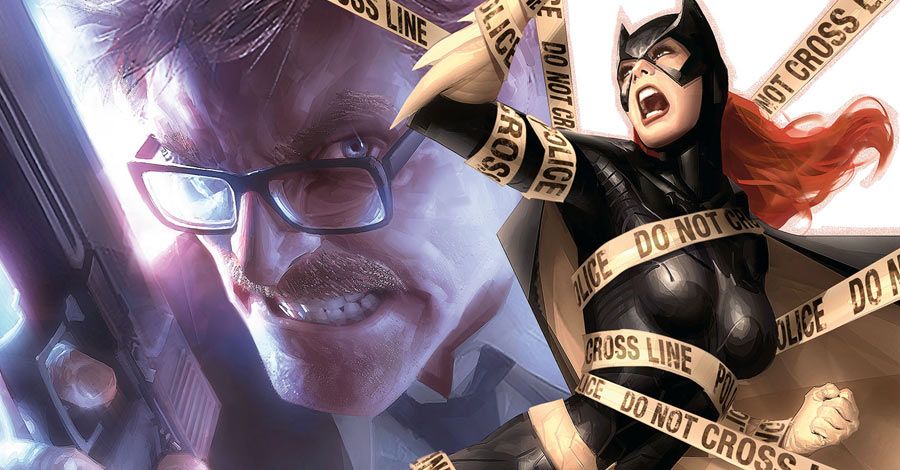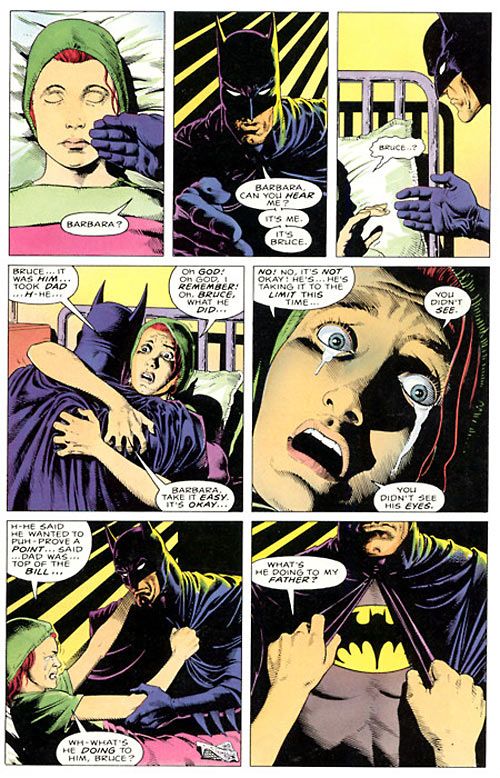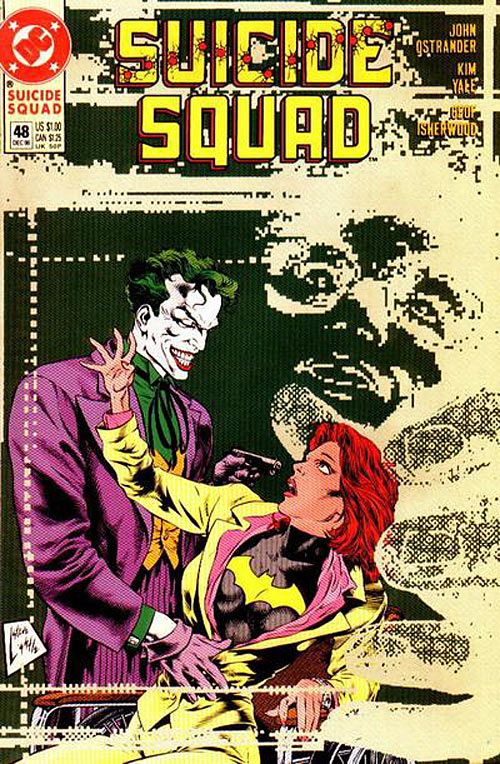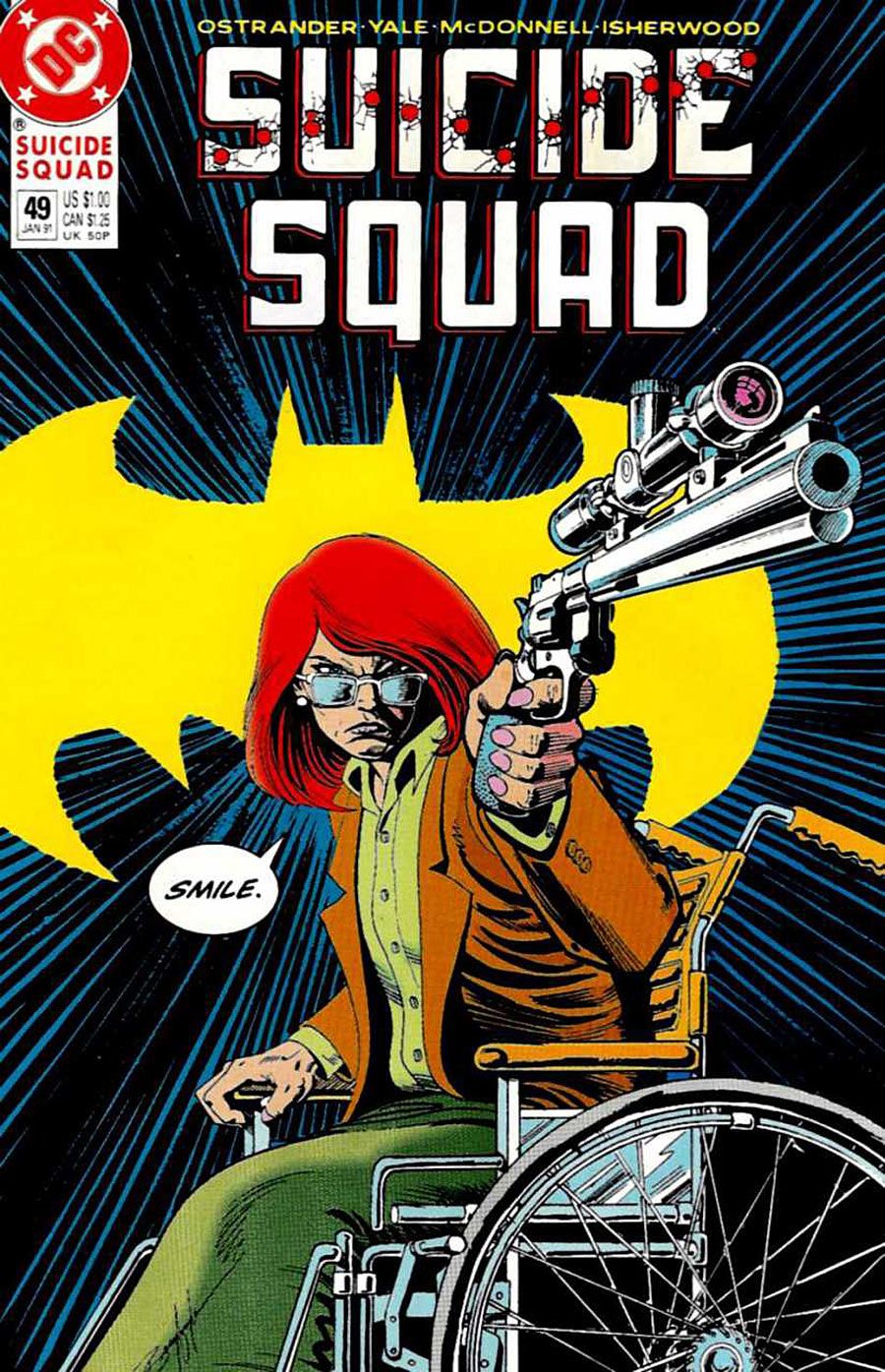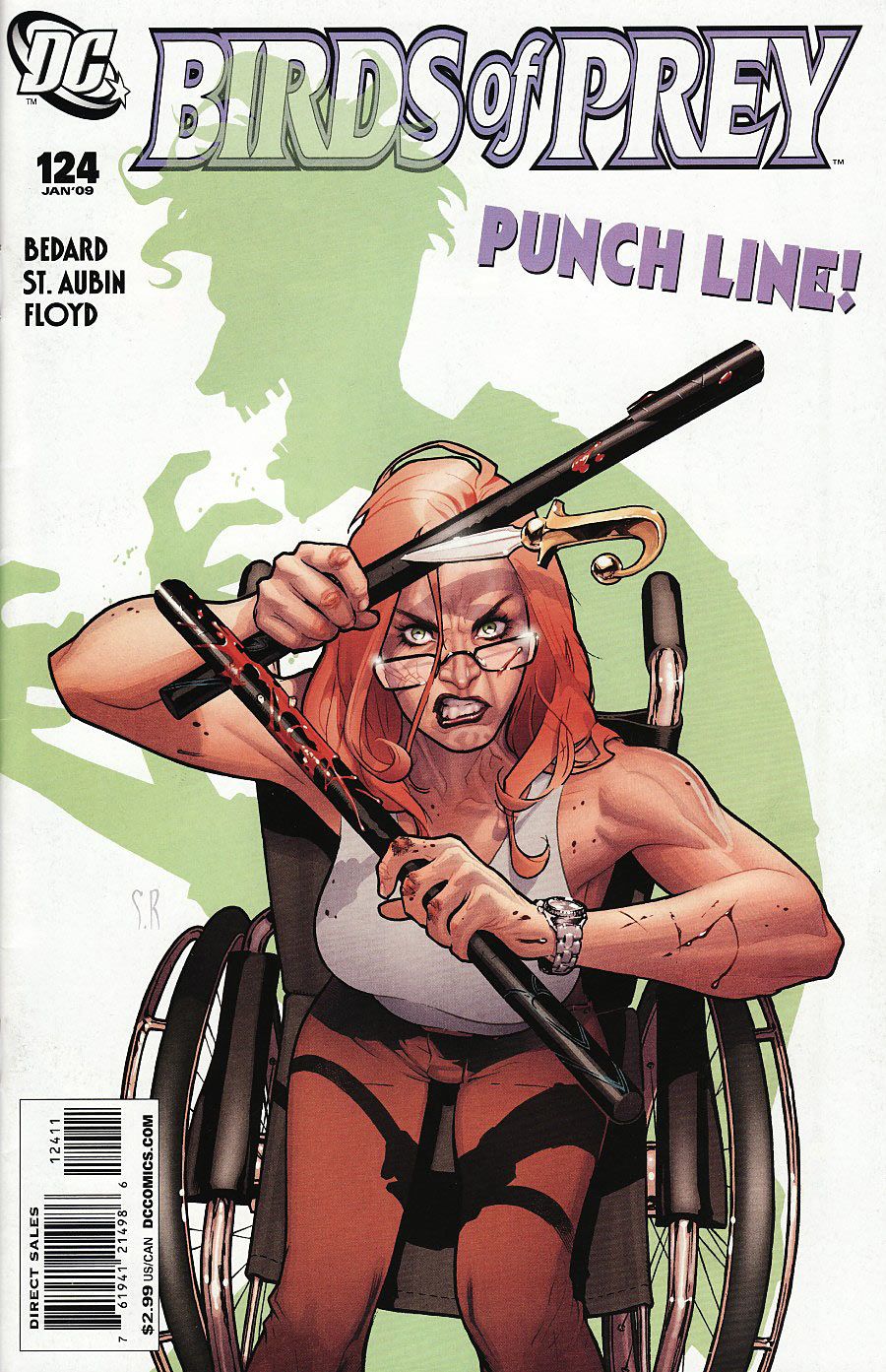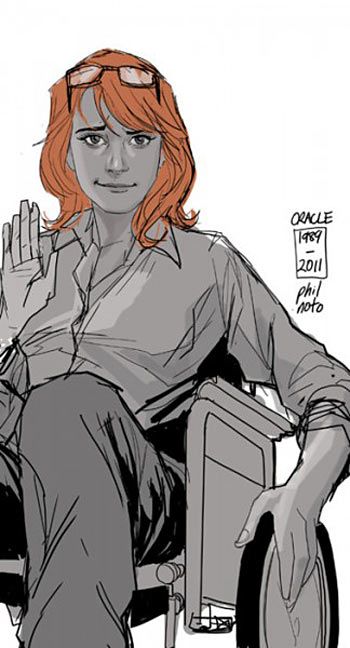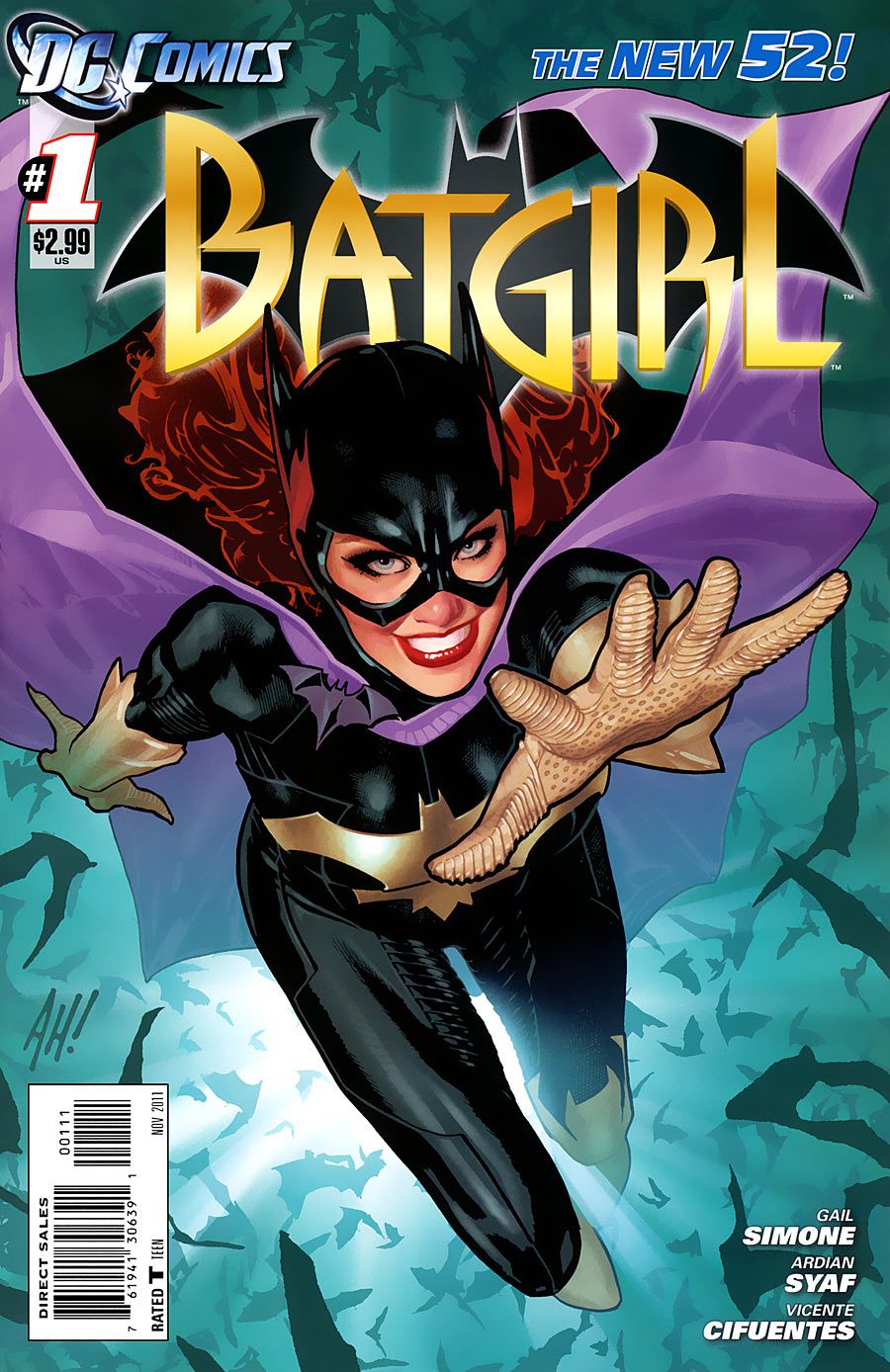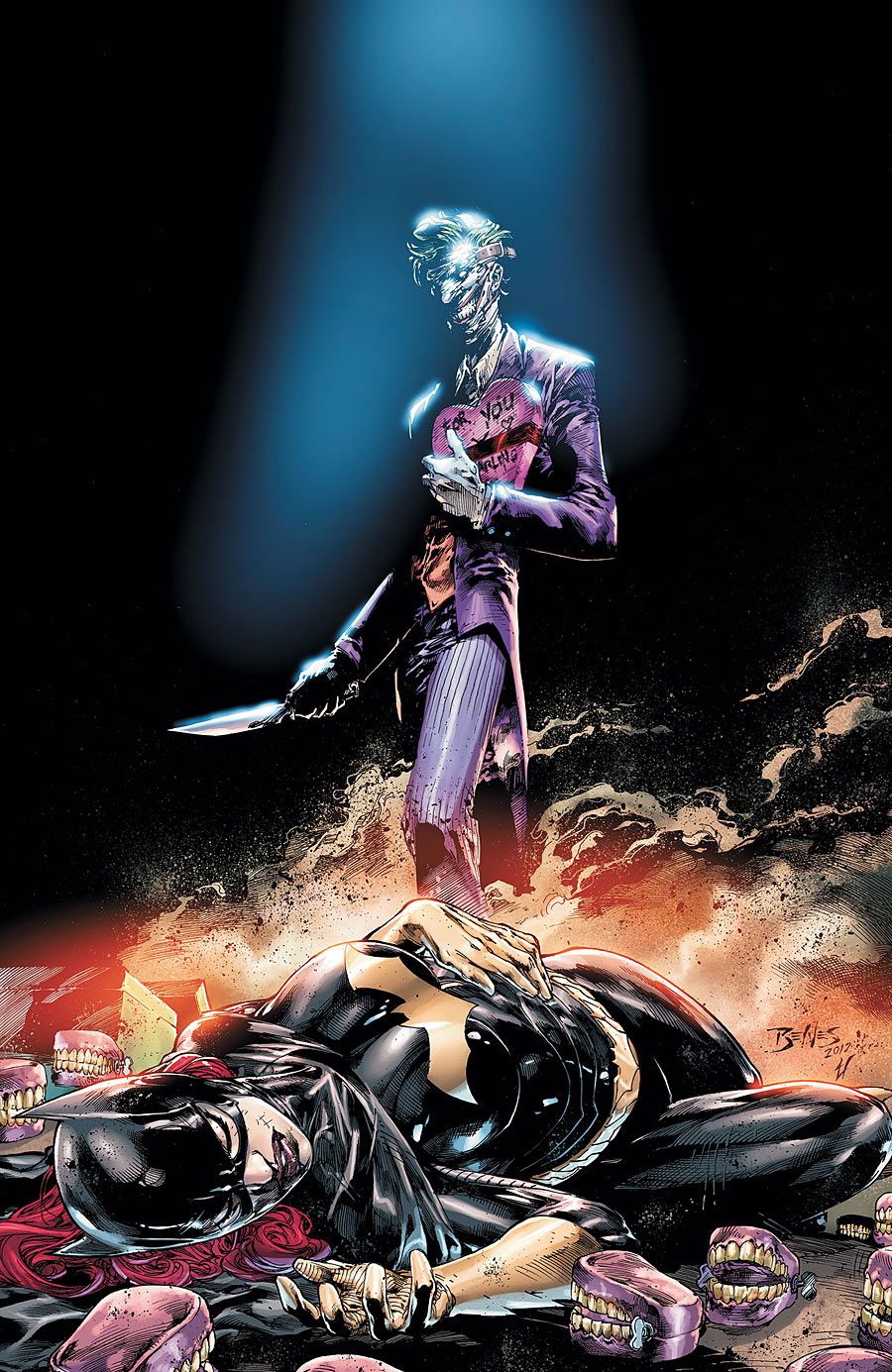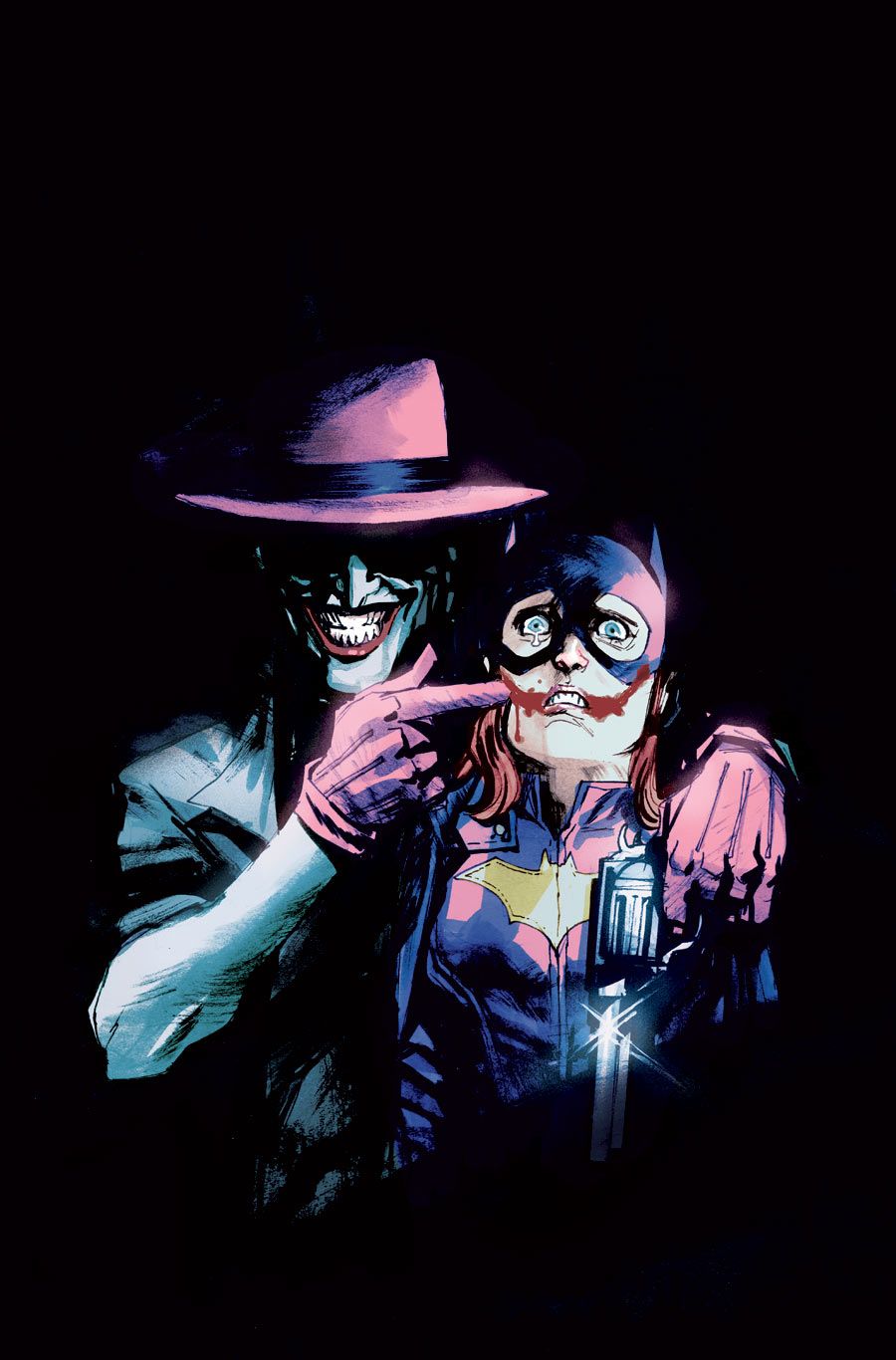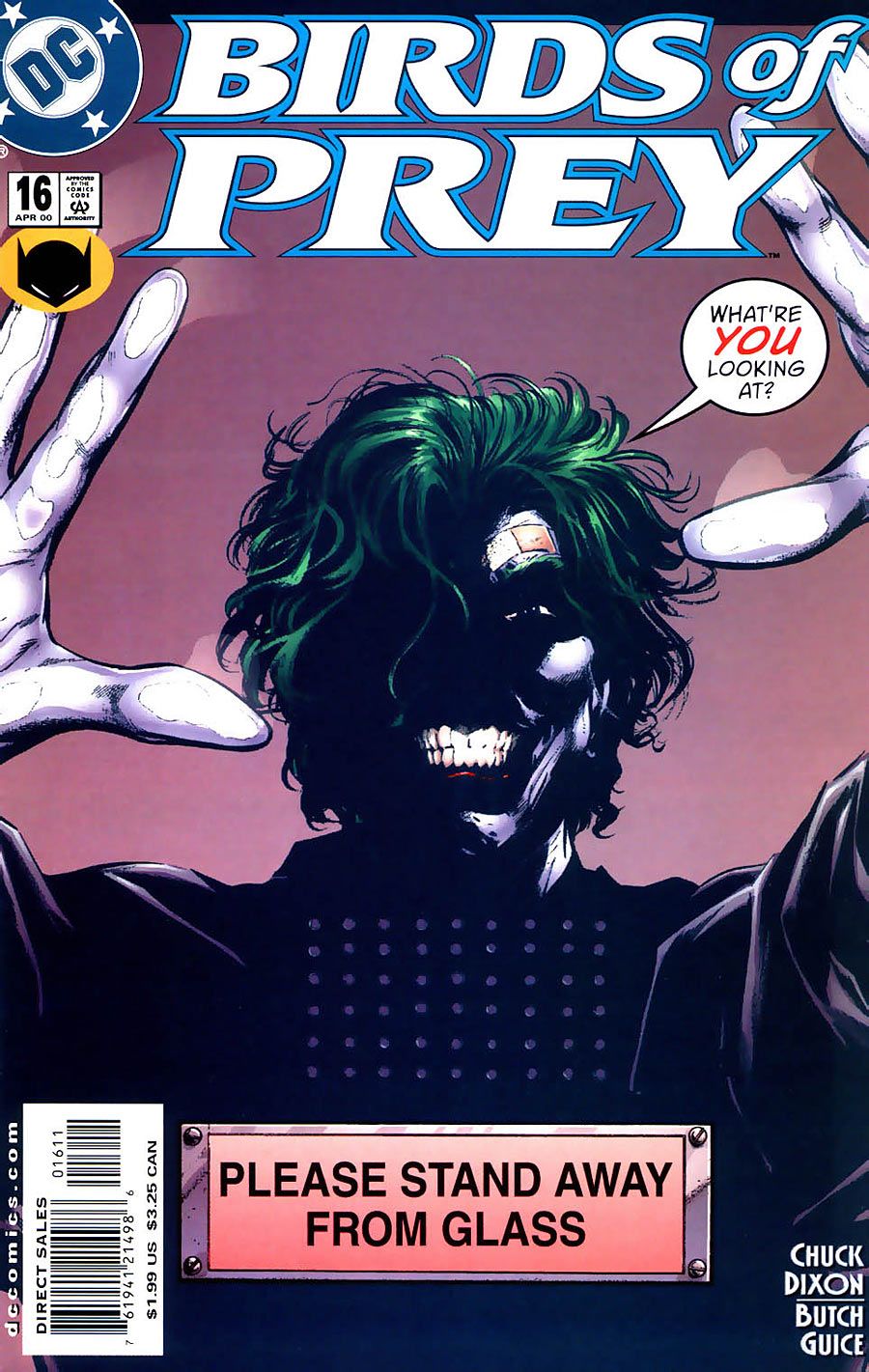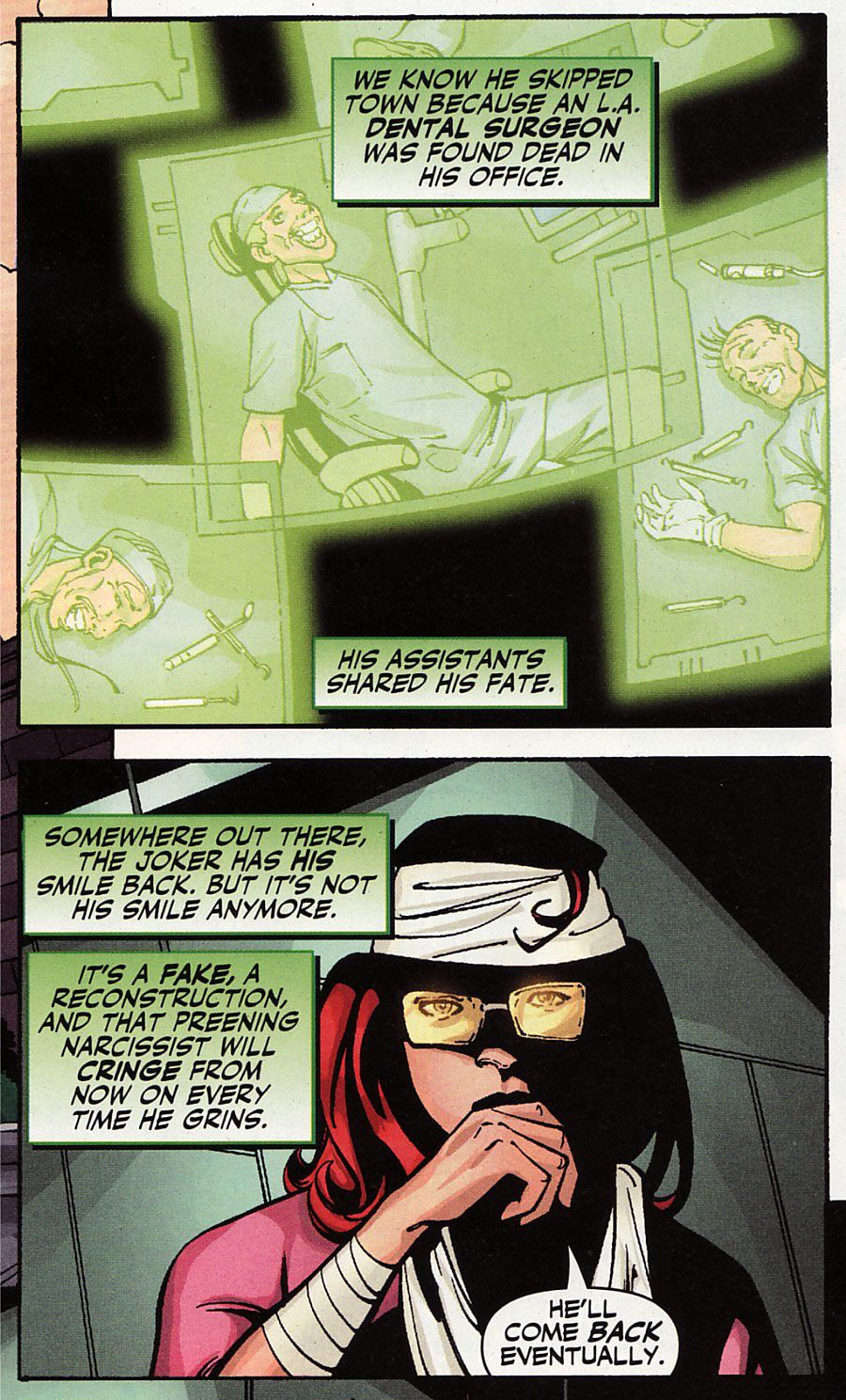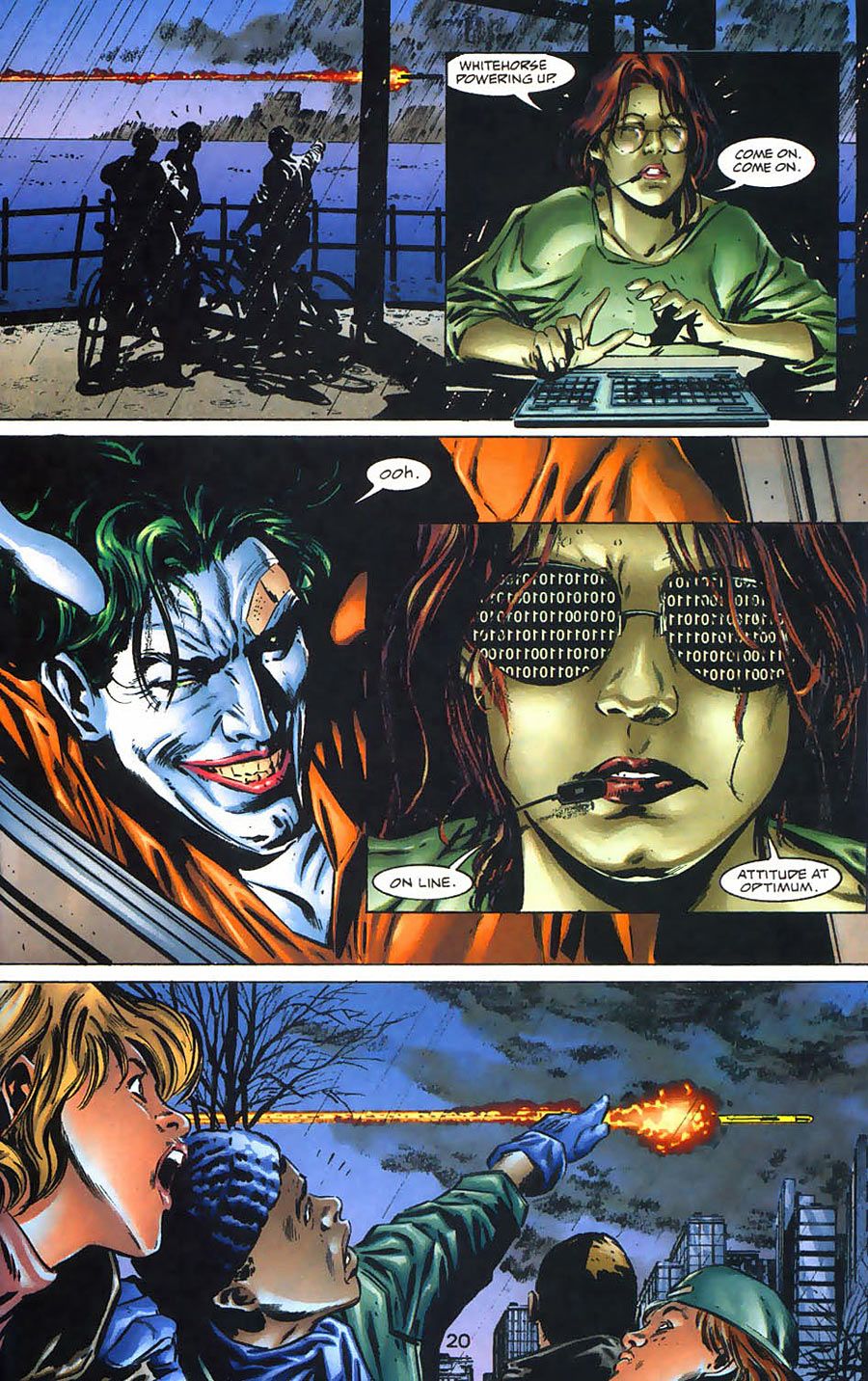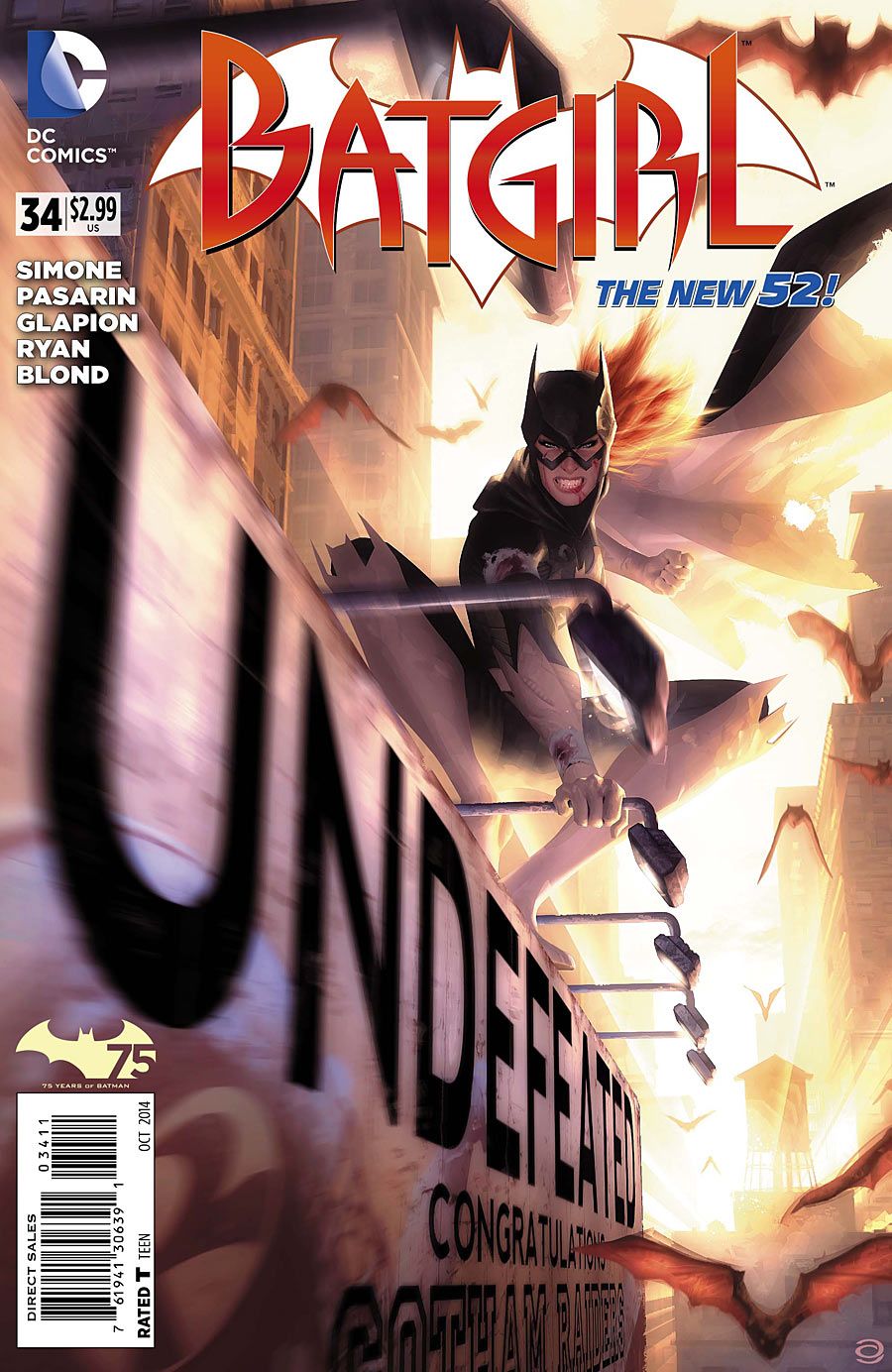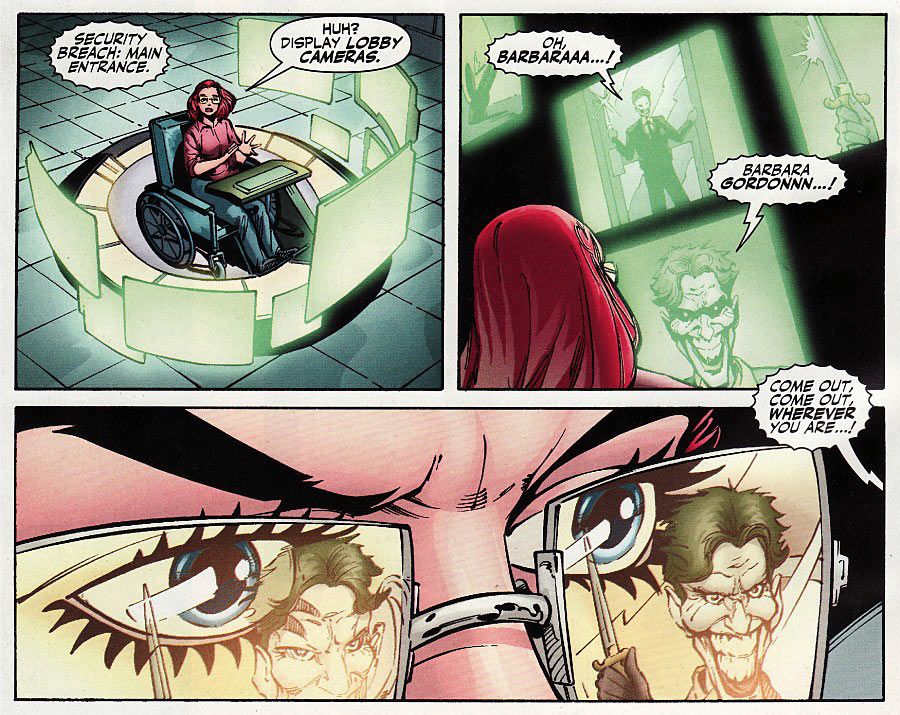In 1988, DC Comics published "Batman: The Killing Joke," a twisted tale written by "Watchmen" co-creator Alan Moore and illustrated by Brian Bolland.
The story was about the supposed origin of Batman's most popular foe, The Joker, and The Joker's goal of proving the point of his perspective to his enemies, including Police Commissioner James Gordon.
This involved, among other heinous acts, shooting Gordon's daughter, Barbara, and shattering her spine. A kidnapped Gordon was then shown pictures of his daughter, with little to no clothing, lying on her floor unclothed and in pain from different angles, leaving the reader to speculate on what happened in between the shooting and the photo session.
Barbara Gordon was Batgirl, and that identity became a part of her past upon losing the ability to walk, to leap through the nighttime sky. She went through the emotional gauntlet, and emerged on the other side as Oracle, the information broker of the DC Comics Universe. Thanks to the writing team of John Ostrander and his wife Kim Yale (gone, but never forgotten), the character of Barbara Gordon became a new kind of hero, and a heroic example for wheelchair users of any age.
A heroic example, period.
Simone Adds "Batgirl," "Fury of Firestorm" to DC's New 52
In 2011, when DC Comics revamped their main line of superhero books in the initiative known as the "New 52," Barbara Gordon was made Batgirl, again. The change was met with the displeasure of many fans, including myself. Credit must be given to writer Gail Simone, writer of the character Barbara Gordon in both versions, as Oracle in the monthly series "Birds of Prey" and in the new "Batgirl" series. Gail used real-world events to make Barbara's recovery and renewed ability to walk seem feasible.
But oh, that wasn't enough. Barbara Gordon is most marketable when she is put in close contact with her nemesis, The Joker. The man who destroyed her life and spine, who violated her dreams and personified her fears. Once you add the fact that Batgirl has eidetic memory, the traumatic shooting becomes an event one has little chance of forgetting.
DC Comics has used a variety of opportunities to pit Barbara Gordon against The Joker, and I was involved in one of those battles.
As the second editor to take on guardianship of the DC Comics series "Birds of Prey," my first full story arc involved Barbara, as Oracle, having The Joker kidnapped by Black Canary and Power Girl, so she could interrogate him and learn the details of his latest plot for mass murder.
Writer Chuck Dixon and illustrator Butch Guice helped craft a haunting story in "Birds of Prey" volume 1 #16 that showed Barbara in a position of power over The Joker for the first time since the events in "Batman: The Killing Joke." The two never saw each other's faces, but their connection was there, the tether that bound them through history. Barbara faced that specific fear, that Bogeyman, and maintained her ground.
Writer Tony Bedard would later tackle a more direct confrontation between Oracle and The Joker in "Birds of Prey" #124.
The shooting of Barbara Gordon has been repeated so many times in comics that we will never forget it. Fandom's eidetic memory.
This brings us to the Joker-themed variant cover to issue #41 of the current "Batgirl" series. Illustrated by Rafael Albuquerque, it shows Batgirl held by The Joker. Just as the eidetic memory of Barbara Gordon allows her to pick out details of events, let's note a few details of the illustration.
Batgirl is crying.
The Joker is holding a gun over one of her breasts.
He's touching her face, pushing the flesh inward.
The gun is pointed downward, in the direction of Batgirl's legs.
To be fair, this cover is for a variant edition, of limited number and not available in all outlets. Also, it has a price tag which will hold back all but the die-hard collectors of variant editions.
Also, to be fair to the artist, even if he submitted the idea, he did not have the authority to approve it for publication.
Ultimately, this lies in the lap of the publisher.
The same publisher that announced a relaunch of half of their line, which included books with revamped female heroes, like the Black Canary. Beyond the shadow of a doubt, the move was partial acknowledgment of the female consumer base and a desire to respond to what girls and women want from their comic book fiction.
It's true that you can look at covers from the past and find an instance of The Joker and Batgirl together, but most of the time the stories involved Barbara and The Joker, that was not the case.
So why now? Why up the ante in such an insensitive manner?
Publicity? Well, mission accomplished.
Money? Well, yes, to get someone to pay for a variant edition, you have to give the customer a cover so enticing that the hand is already on the credit card before the store employee can pull the book away.
It's highly unlikely that a purpose of the cover was to represent women in a way they wish to be seen.
If the social media firestorm that erupted last weekend is any indication, the cover's not being well-received by women, or men, for that matter.
What good comes from a cover with such a gruesome image, which exploits a history supported by the depiction of a terrible act against a woman?
Nothing.
Any "good" thing it provides for the publisher can be gained with a different cover.
So what it comes down to is courage and integrity.
The courage to decide to avoid the path of least resistance and instead of pushing the red button, come up with another idea.
To decide that the exploitation of victimization is not something that needs to be revisited in this way.
The integrity to have a consistent ethos. One that does not change with solicitation cycles and the availability of a comic book.
The character of Barbara Gordon has become a symbol for so many good themes and ideas.
She's endured the test of time, and transformation.
Time to stop shooting her in the gut.
Joseph Phillip Illidge is a public speaker on the subjects of race, comics, and the corporate politics of diversity. In addition to his coverage by the BBC and Publishers Weekly, Joseph has been a speaker at John Jay College of Criminal Justice, Digital Book World's forum, Digitize Your Career: Marketing and Editing 2.0, Skidmore College, Purdue University, on the panel "Diversity in Comics: Race, Ethnicity, Gender and Sexual Orientation in American Comic Books," and at the Soho Gallery for Digital Art in New York City.
Joseph is the Head Writer for Verge Entertainment (www.verge.tv), a production company co-founded with Shawn Martinbrough, artist for the graphic novel series "Thief of Thieves" by "The Walking Dead" creator Robert Kirkman, and video game developer Milo Stone. Verge has developed an extensive library of intellectual properties for transmedia development. Live-action and animated television and film, video games, graphic novels, and web-based entertainment.
His latest project is "The Ren," a 200-page graphic novel about the romance between a young musician from the South and a Harlem-born dancer in 1925, set against the backdrop of a crime war and spotlighting the relationship between art and the underworld. "The Ren" will be published by First Second Books, a division of Macmillan.

